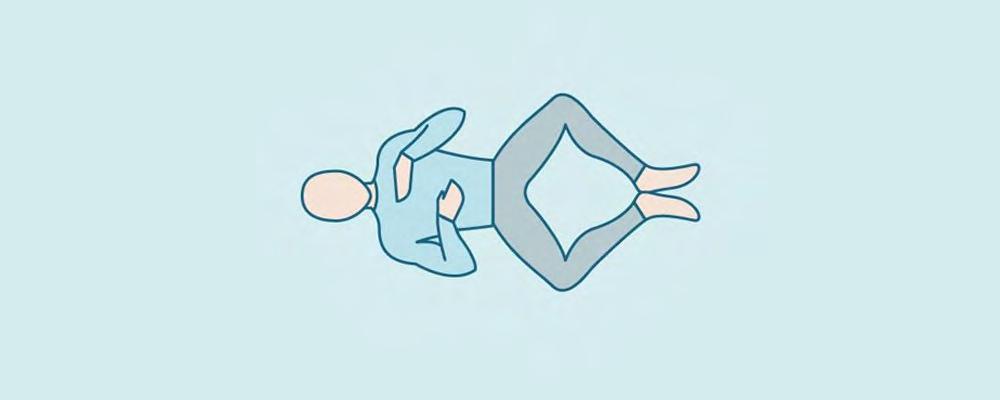DECEMBER 2024
ASK THE EXPERT: DOWNSIZING
FEATURE:
GIFT IDEAS: 20 GREAT GIFT IDEAS FOR SENIORS
STRENGTHENING MEN’S HEALTH: A CONVERSATION ON PELVIC FLOOR WELLNESS
Pelvic floor health is an important but often overlooked aspect of men’s overall wellness, impacting everything from bladder and bowel function to sexual health. Despite common misconceptions, pelvic floor issues are not limited to women, and men can experience a variety of challenges in this area as well. Conditions such as incontinence, pelvic pain, erectile dysfunction, and even lower back pain can all be connected to pelvic floor dysfunction in men.
continued on page 4
LETTER FROM THE EDITOR
Amy Phariss, Editor-in-Chief, OutreachNC | editor@outreachnc.com
In a few weeks, 2024 will close to an end. It’s hard to believe. The months have flown by in a flurry of social, economic and cultural bustle.
In January, US Army veteran Henry “Robby” Robinson (98) was awarded France’s Medal of Honor for his service in WWII.
February was challenging with King Charles III diagnosed with cancer and a landslide in the Philippines killing at least 68 people. The Super Bowl LVIII was the most-watched TV program in history, and Korean scientists say they created “meaty rice,” with beef grown inside rice grains in a lab, adding 8% more protein.
A March 8 report by the Pentagon into UFOs since 1945 found no evidence of aliens or extraterrestrial intelligence.
On April 16, Denmark’s historic stock exchange, the Børsen, dating from 1625 went up in flames in Copenhagen while being renovated.
A month later, Cyclone Yagi, Asia’s most powerful storm of the year, made landfall on Hainan, China, before striking Northern Vietnam with winds of 230 km per hour (140 m), killing at least 127 people.
In October, Jimmy Carter marked his 100th birthday at home in Plains, Georgia - the first former US president to reach the milestone, and the Nobel Prize in Literature was awarded to South Korean author Han Kang.
OCTOBER 2022 - 2
November was a big month for the US, as Former Republican President Donald Trump was re-elected. Across the pond, the bells of Notre-Dame Cathedral in Paris rang out for the first time since the 2019 fire.
One month later, on May 16, the Dow Jones Industrial Average surpassed 40,000 points for the 1st time, before closing at 39,869.
In June, US President Joe Biden announced an executive action to enable 500,000 spouses and children of US citizens to apply for citizenship without leaving the country, and a day later, Louisiana Governor Jeff Landry signed a law requiring classrooms display the Ten Commandments, the first state to do so.
In July, researchers learned hippos can fly – or at least become airborne – and Former US President Donald Trump survived an assassination attempt.
On August 7, MLB Philadelphia Phillies slugger Kyle Schwarber tied career highs with 3 home runs and 7 RBIs in 9-4 win over Dodgers at Los Angeles.
Amy Phariss, Editor-in-Chief , OutreachNC | editor@outreachnc.com
Well, it’s official: fall is here. I had my first pumpkin-spiced latte just ture dipped low enough to merit a fleece.
Don’t worry. It was decaf.
October is a gentle month. There are constant reminders of change. we are lucky, toward each other. We have lingering conversations the flames flicker. Smoke dances around us in a circle. We zip our
Here we are now, in December. South Korean President Yoon Suk Yeol declared martial law for the first time in 50 years, prompting an emergency vote against it by the National Assembly. Namibia elected its first woman president, Vice-President Netumbo Nandi-Ndaitwah, and US President Joe Biden pardoned his son, Hunter Biden.
The month is still young.
In this month’s feature, we’re starting an important conversation: care community for ourselves or a loved one? Fox Hollow Senior Robin Hutchings offers inside perspective for making this decision.
In Ask the Expert, Amy Natt answers a reader’s question regarding away without any estate planning. Without a will or access to important
Obviously, more events have unfolded across the globe, in our country, among our cities and within our communities. Alongside the births, deaths, beginnings and endings, we continue to love each other, argue our points, face our fears, set boundaries, bemoan regrets and live along into another year.
Physical therapist Dr. Sara Morrison of Total Body Therapy and potential diagnostic tools used in physical therapy to help diagnose these tools differ from what other doctor’s offices may offer.
However we feel about the past 12 months, let us remember Socrates’ wise words:
“The secret of change is to focus all of your energy, not on fighting the old, but on building the new.”
I’m going to agree with Nathaniel Hawthorne this month, who wrote: I cannot endure to waste anything so precious as autumnal sunshine spent almost all the daylight hours in the open air.
Here’s to a new year and to the weeks we have left to celebrate and appreciate 2024.
Here’s to enjoying the October sunshine, falling leaves and daylight
Merry everything,
facebook.com/agingoutreach/ instagram.com/agingoutreachservices/
STRENGTHENING MEN’S HEALTH: A CONVERSATION ON PELVIC FLOOR WELLNESS
by Amy Phariss
In this interview, we sit down with Rick Young, a physical therapist specializing in pelvic floor health for men, to shed light on this often-taboo topic. We will explore the signs and symptoms of pelvic floor dysfunction, discuss the potential causes and risk factors, and dive into the vital role physical therapy plays in rehabilitation. Young also explains how exercises, techniques, and lifestyle changes can help strengthen and support the pelvic floor, improving quality of life and reducing discomfort. Whether you’re dealing with specific pelvic concerns or simply want to understand the importance of pelvic floor health, this conversation offers valuable insights that can benefit men at any stage of life. Join us as we break the silence and explore how pelvic floor health is essential to a man’s well-being.
This interview has been edited for length.
OutreachNC: Thanks for sitting down with us and talking about what can sometimes be a delicate subject. Start by telling us: What brought you into this field?
Rick Young: I graduated from Penn State University in 1985 with a Bachelor’s degree in psychology with an emphasis on marriage and family therapy. In 1992, I graduated from Temple University with a Master’s Degree in Physical Therapy and moved to Moore County in 2001.
Historically, pelvic floor physical therapy has primarily been for women. But just like women, men also have pelvic floors. They don’t however, have the equivalent of a specialty. If they have issues below the belt, they
typically go to their primary care physician or urologist, who may not focus on the pelvic floor muscles.
ONC: First, before we dig deeper, can you explain the connection between pelvic floor dysfunction and other conditions like erectile dysfunction or chronic prostatitis?
RY: With respect to erectile dysfunction, the muscles play a role in maintaining an erection. If those muscles are weak, an erection may not last very long. I’ve treated men who’ve had a prostatectomy who might get some activity down there, but it doesn’t last long. Some of that is linked to muscle weakness.
ONC: What kind of pain can men experience?
RY: Men can experience pain related to different activities. If there is no organic issue (some type of trauma, cancer, fascial issues), pain will most likely again involve muscle. Pain can come from tight pelvic floor muscles, such as pain after ejaculation or can be referred from other areas of the body such as the low back or hips. Pain also has a psychological component. That’s out of my scope of practice but I do refer patients to practitioners who address those issues. Usually, relaxation and flexibility of muscles is the approach I take with pelvic pain.
ONC: When do patients come to see you? At what point are patients reaching out for pelvic floor therapy?
RY: There are a lot of people who have these issues and don’t know what to do. People right now are mostly coming to me after seeing their physician, usually their urologist, but some do come from their primary care physicians. They will usually come for urinary issues, but also for pain, sex, and bowel issues.
ONC: What do you think keeps men from seeing a physical therapist for these issues?
RY: Much of the population has no idea what physical therapists actually do. When it comes to incontinence, sexual problems, or pain, people typically think “I need to go to my physician, I need some type of medication.” If men are not
aware of the fact that they have a pelvic floor and muscles down there, physical therapy wouldn’t even be on their radar. But, when people are educated to the fact that most of these issues are related to muscle, physical therapy as a treatment starts to make sense.
ONC: Is there stigma in treating these issues?
RY: Absolutely. Many men may see this as some type of weakness or a threat to their masculinity, which they end up being embarrassed over. The truth is, it has nothing to do with masculinity, and it happens to everybody.
ONC: Can you talk about the psychological part of pain?
RY: Pain is 100% in the brain. This doesn’t mean it’s all in your head and you’re making it up. It means that your perception of pain is controlled by your brain. That’s how a football player can continue to play with a broken finger and not let it affect his performance. Then, when the game is over, the pain is excruciating because he’s no longer preoccupied by the game. How one thinks about his pain will affect the intensity of that pain. If a man has pain after ejaculation, this could end up being very traumatic. “Why does it hurt down there?” “I don’t see anything wrong, and I didn’t injure myself, maybe I have cancer.” Then, at that point, the pain can become worse, which feeds into muscle tightness and this feeds into more pain. A great resource for patients to understand the mental connection to pain is a YouTube video entitled “Treating Pain Using the Brain.”
ONC: What do you like most about doing this work?
RY: Happy customers. When a guy tells me, “I only got up once last night” (instead of five times) or wearing fewer undergarments or no longer associating sex with pain.
A LOT OF GUYS DIDN’T THINK THIS SUCCESS COULD HAPPEN. OBSERVING THE IMPROVEMENTS THEY’RE HAVING IS THE BEST THING.
6 EXERCISES TO RELIEVE MALE PELVIC PAIN TO DO AT HOME
6 exercises to relax and assist in changing the tight holding patterns often found in the pelvic floor of males who suffer with chronic prostatitis/chronic pelvic pain syndrome (CP/CPPS). Practicing these exercises daily in the comfort of your own home can help you start to recover and relieve your pelvic pain. As with any change in exercise routine, please consult with your physician first.
ABDOMINAL BREATHING
• Lie on your back somewhere quiet with support under your head and knees.
• Place one hand on your chest and one on your abdomen.
• Take a slow, deep breath in through your nose. Feel your tummy rising slowly into the hand on your abdomen.
• Breathe out slowly through a relaxed mouth. Allowing your tummy to return to its starting position.
• Repeat for 5 minutes. Keep the breath slow and rhythmic (3 seconds for in, breathe, and 3 seconds for out, breathe). Don’t force it. This deep, abdominal breathing technique will be used in all the pelvic pain exercises. Practice this first to ensure a good foundation.
ONC: What ages of men come see you?
RY: I have patients of all ages. Younger guys usually are dealing with pain, while older guys, incontinence and erectile dysfunction. But sometimes, these issues don’t really care what age a man is.
ONC: Let’s talk about incontinence. For many men, this is an issue with aging. Can you talk about why this happens and how physical therapy can help?
RY: The main issue with incontinence is muscle. As we age, skeletal muscle throughout the body can become weak. The pelvic floor muscles aren’t any different. The pelvic floor is loaded with skeletal muscles, so they can be strengthened. It is recommended we stay active as we age to keep arm/leg/trunk muscles strong. The same is true for the pelvic floor muscles.
The other issue is muscle coordination, which when compromised, can result in stress incontinence. This is mostly a timing issue. When one is having no issues, the body will automatically contract the pelvic floor muscles prior to an activity that may increase pressure in the trunk, such as coughing, sneezing, or standing from sitting. When issues start happening, one has to consciously address it before it can become automatic again.
Everything I teach clients, and it seems like a lot of stuff, is initially on a conscious level. We need to do this to “jump start” the activity again. If we consciously think about these things, we’re hoping they once again become automatic. For instance, with stress incontinence, when you go to stand up, you have to think, “Okay, I’m going to tighten my pelvic floor before I stand up.” Or consciously tighten the pelvic floor before bending over or coughing. The hope is that the more you do this, along with strengthening exercises, the more it will become automatic.
In regards to prostatectomy, we’re basically substituting muscles further “down the line” for ones that have been damaged during surgery. The prostate is encased in a cobweb of nerves.
There are also sphincter muscles above and below the prostate. When removing the prostate, there is typically damage to those nerves and muscles.
ONE OF THE THINGS THAT CAN HELP IS PRE-OPERATIVE STRENGTHENING OF THE MUSCLES. SOMETIMES, PATIENTS WILL BE SENT TO PHYSICAL THERAPY PRIOR TO A KNEE OR HIP SURGERY FOR STRENGTHENING, RESULTING IN A MORE PRODUCTIVE POST-OP REHAB. THE PELVIC FLOOR MUSCLES ARE NO DIFFERENT.
Strengthening these muscles can help the patient be ahead of the game after surgery.
ONC: So prostate health is more than just cancer?
RY: Yes. The prostate is a small gland below the bladder. The seminal vesicles, where most of the semen is produced, are behind the prostate and empty into the urethra through the prostate. The prostate contributes additional fluid to the semen and its muscles also help push semen through the urethra during orgasm.
Other issues affecting the prostate are prostatitis (inflammation of the prostate), and Benign Prostatic Hyperplasia (BPH), where the tissue in the prostate grows. When this happens, the prostate “expands” on the outside, but since the urethra is running through the middle of the prostate, the tissue on the inside expands as well, closing off the urethra. This is why many men with BPH have difficulty urinating.
There are surgical procedures to help “open the line,” but then incontinence can become an issue. Physical therapy can help strengthen the muscles to eliminate that leakage.
ONC: How can a wife or partner of a man struggling with incontinence help or be supportive?
ADDUCTOR STRETCH
• Lie on your back with a pillow under your head.
• Keeping your feet together on the floor bend your knees up.
• Allow your knees to drop out to the side with the soles of the feet together. You should feel a gentle stretch on the inner thighs between the groin and inner knee. Place a pillow under each knee to provide support to begin with. Reduce the support to increase the stretch over a period of weeks.
• Follow the deep, abdominal breathing technique protocol for 2 minutes.
LYING SQUATS
• Lie on your back with your head supported on a pillow.
• Ensure your tailbone is a few inches from the wall.
• Ensure the hips and knees are bent beyond 90 degrees.
• Place your feet flat on the wall.
• Let your knees relax and drop out to the side slightly.
• Practice the deep abdominal breathing technique protocol for 2 minutes.
• As you inhale you should feel a gentle dropping or bulging of pelvic floor between your tail and sit bones.
REVERSE KEGELS
• In the squat position take a deep breath into your abdomen (as in the breathing protocol).
• As you exhale gently bear down into your back passage like you are passing wind. This is subtle and should not be forced. You should feel a gentle dropping or bulging of the pelvic floor near your tail bone.
• Repeat steps 1 and 2, this time gently bear down at the front like you are passing urine. This is subtle and should not be forced. You should feel a gentle dropping or bulging of the pelvic floor around the penis and testicles.
• Practice the above techniques for 2 minutes until you are able to feel the subtle changes in both the front and rear portions of the pelvic floor. Be patient, this may take time.
• Once you can feel this subtle change practice steps 1 to 3 with the breath and out breath.
• It should still remain subtle and gentle.
PELVIC FLOOR STRETCH
• Lie on your back with a pillow supporting your head.
• Bend your hips and knees to 90 degrees and place your feet on a chair.
• Place your feet together and allow your knees to relax out to the side.
• Place your fingertips on your knees.
• Gently push your knees into your fingertips
RY: The biggest help is to understand what’s going on. This most certainly is not a fault on the man’s part, and a lot of women may be dealing with this as well. Understanding having to pee frequently or wear some type of undergarment can help loads with how a man feels about himself. I also tell men they can set an alarm on their phones to remind them to do the exercises, but a partner can be a much better reminder, which can also convey to the guy, “Hey this person cares about what’s going on with me, I’m not in this alone.”
ONC: What types of exercises can help improve bladder control and reduce incontinence?
RY: I give two kinds of exercises. Everyone seems to be familiar with Kegel exercises, and that’s basically what I’m having people do. But there are different intensities and activation patterns depending on if the exercises are addressing endurance or strengthening.
The one important thing I try to get across to patients is to not substitute other muscles. People will hold their breath or squeeze their belly or rectum when doing these exercises. None of these actions will help to activate the slow-twitch, endurance pelvic muscles. I tell patients that if someone is looking at you while you’re doing these exercises, they shouldn’t be able to tell that you are doing them.
ONC: Are there any lifestyle changes, like diet or hydration habits, that could help manage incontinence symptoms?
RY: After a prostatectomy, men usually will not want to drink a lot to prevent leakage. Unfortunately, this can lead to dehydration. One should keep drinking fluids, but at the same time, work on endurance and strengthening exercises. The other thing that can happen is increased urinary frequency, again to prevent leakage. So, the combination of leakage and increased frequency leads to a decrease in bladder capacity. This can be corrected by incorporating some behavioral strategies. Most of the time, this is habitual. Some guys will say they empty their bladder before getting in the car or between courses at a restaurant, whether they need to or not. The best solution to treat this is to change those habits.
Even at night, if one feels the urge, he can do maybe four or five low intensity contractions, holding each for 10 seconds, and see how he feels afterwards. The urge may pass. In the case of urinary urgency, I’ll tell guys to keep calm, stand still or sit down, relax the abdominal muscles, and wait one minute until the urge disappears. This sounds counter-intuitive, but the urge may eventually disappear. At that point, one can calmly walk to the bathroom or go off and do something else.
ONC: How long does it typically take to see improvement in incontinence symptoms with physical therapy?
RY: It can take a couple of weeks to start to see a change. I tell my patients the most important thing with these exercises is consistency. The exercises need to be done every day and done correctly. Many patients see small, incremental improvements, but they need to stay persistent.
IT TAKES A LONG TIME TO STRENGTHEN SKELETAL MUSCLE; IT WON’T HAPPEN OVER A WEEK.
If they’ve had surgery, they are dealing with nerve and muscle damage that will complicate strengthening even further.
ONC: Are there other issues that men deal with in the pelvic area?
RY: Other problems may include not fully emptying the bladder. This is usually related to muscle tightness. Some men will keep a low-level of tension which will close off the urethra and not allow the bladder to empty. When you pee, you should just relax everything, and your brain will do the rest.
Additionally, men can have issues with their bowels. Just like urinary incontinence, men can experience fecal incontinence as well. These are all issues we can address in physical therapy.
If anyone has any questions regarding men’s pelvic health and physical therapy, they can call me at Aberdeen Physical Therapy and Wellness at 910944-1169.
(using roughly 10% of your strength).
• Aim to gently push your knees up and out toward your ears, to where the corners of the wall meet the ceiling behind you.
• Hold for 5 seconds, relax and repeat. Practice for 30 seconds.
• You should feel a slight drop and bulge of the pelvic floor around the perineum, tail bone, penis and testicles (much like the Reverse Kegel exercise).
• Keep your stomach muscles relaxed, do not brace them. Use the abdominal breathing technique protocol to aid this.
And finally… Listen to music LISTEN TO MUSIC
• Plug in you headphones
• Select your music
• Press play
• Lose yourself in your favourite tunes
“Listening to music can be an effective part of managing chronic pain. Studies show it can reduce perception of pain, anxiety and stress, improve pain tolerance levels, and result in a reduction of drug requirements. The ‘most effective’ music is generally positive, low arousal and bright. Music can distract the patient from persistent pain, increasing feelings of control and improving mood.”
Source: https://www.thepelvicpainclinic. co.uk/6-exercises-relieve-male-pelvic-pain/
Gift Ideas
One of the biggest mysteries of the holiday season is: what do I give someone who has everything?
For many of us, parents and grandparents fall squarely into this category. We struggle to think of creative, meaningful gifts for the people who mean the most to us.
This year, we’re offering a few suggestions if you have last-minute gift giving on your to-do list!
One of the best ideas we’ve recently heard is to give a grandparent a gift card to a restaurant, to share a meal one-on-one with a child or grandchild. So, granddad gets a gift card for a meal at Cracker Barrel with his granddaughter, on a day he chooses. We can’t think of a better gift than the combination of food and time!
Here are 20 more ideas for gifts our loved ones will love (and use) this holiday season:
PERSONALIZED PHOTO ALBUM
A custom photo album filled with family memories.
WEIGHTED BLANKET
Known for its soothing effects on sleep and anxiety.
MEMORY FOAM SLIPPERS
Soft and comfortable for daily use around the house.
DIGITAL PICTURE FRAME
A rotating display of family photos, easy to update remotely.
ELECTRIC BLANKET
A cozy, easy-to-use blanket for extra warmth.
SUBSCRIPTION TO AN AUDIOBOOK SERVICE
Perfect for those who enjoy books but have difficulty reading.
JIGSAW PUZZLES
Stimulating and engaging for the mind, with beautiful designs.
SENIOR-FRIENDLY SMARTPHONE
A simple, easy-to-use phone with large buttons and features.
MONTHLY FLOWER DELIVERY
Fresh flowers that brighten up any room.
MEMORY FOAM PILLOW
For better support while sleeping or resting.
PERSONALIZED CALENDAR
A custom calendar with family pictures and important dates.
MAGNIFYING GLASS WITH LIGHT
Great for reading fine print or crafting.
SMART HOME DEVICES
Like smart speakers (e.g., Amazon Echo or Google Nest) to help with reminders or entertainment.
A COZY THROW BLANKET
A soft, stylish blanket to add warmth and comfort.
FITNESS TRACKER
A simple device to monitor steps and health metrics.
KNITTING OR CROCHET SET
For those who enjoy crafting or want to start a new hobby.
SUBSCRIPTION TO A STREAMING SERVICE
For access to movies, TV shows, or documentaries.
HEATED MASSAGER
Provides relief for sore muscles and tension.
A HOBBY KIT
For gardening, painting, or other creative activities.
BIRD FEEDER WITH SEED
To bring nature into their home and attract wildlife.
These gifts cater to comfort, hobbies, and technology, helping seniors enjoy their time more comfortably and with loved ones.


















































